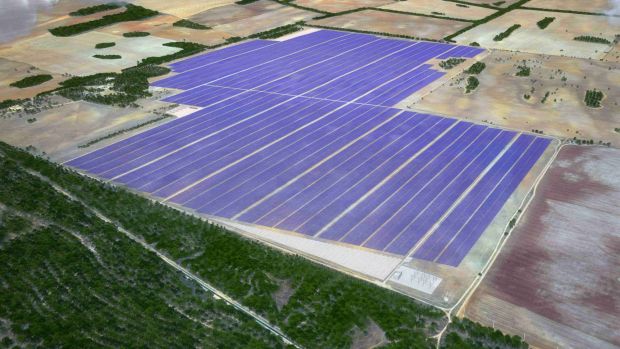If you ever needed confirmation that the time to go solar is now, the deal signed by the University of New South Wales (UNSW) for a 15-year power deal is definitely it.
UNSW inked the deal with Maoneng Australia, saying that the decision to go solar will give the institution price stability, cheaper bills and allow it to become carbon neutral.
The framework of the deal will ensure that 100% of its energy will be provided by Maoneng’s Sunraysia solar power plant. It also signed a three-year firming contract with Origin Energy to ensure that it could get additional power if solar energy generation is low, for whatever reason.
UNSW to purchase power from Maoneng
Maonoeng is building Australia’s biggest large-scale Sunraysia solar power plant in Balranald, NSW. It will produce 530,000 Megawatt-hours of electricity every annually and a whopping 124,000 MW hours – close to a quarter of its capacity – will be reserved for UNSW.
The University’s President, Ian Jacobs, said the agreement was part of the university’s goal to go solar and become energy carbon neutral by 2020.
The signing of the deal coincides with recent figures showing that Australia is set to achieve its target of generating 25% of its energy needs from renewable sources by 2020.
Australia to generate 25% of energy from renewable sources by 2020
The Clean Energy Regulator said that thanks to record levels of investment in renewable energy in 2017, Australia would reach the milestone ahead of time.
It had previously said that 6,000 additional MW hours of power would need to be added to the grid this year, and so far, 4,924 MW out of 6,532 MW of planned capacity is already operating. The rest is expected to come online within the next few months.
Australia ranks fifth in the renewable energy country attractiveness index published by Ernst & Young.
Decision to go solar will mean cheaper bills

But it’s not only about offsetting carbon footprints. UNSW President Ian Jacobs said the decision to go solar was also highly competitive financially.
“The Solar PPA arrangement will allow UNSW to secure carbon emission-free electricity supplies at a cost which is economically and environmentally attractive when compared to fossil fuel-sourced supplies,” he said.
Energy Action, which provided energy market analysis during the agreement process, said this solar power purchase agreement (PPA) was creating a foundation for energy pricing certainty for UNSW.
“This agreement provides UNSW with a direct line of sight over the source of renewables supply, reduced emissions, and greater certainty around prices over the next 15 years,” Energy Action chief executive Ivan Slavich said.
Hedging against future price movements
“We are seeing a strong trend amongst corporate energy users turning to PPAs as a way to hedge against future pricing movements and to meet their green energy objectives.”
Professor Jacobs said: “Over the past six months, UNSW has collaborated with our contract partners Maoneng and Origin, to develop a Solar PPA model that leads the way in renewable energy procurement and reflects our commitment to global impact outlined in our 2025 strategy,” he said.
“This agreement reflects the thought leadership coming from UNSW on climate change,” Professor Jacobs said.
While Mr Jacobs declined to say how this new agreement would impact the university’s power bills, he said the decision was in part financially driven.
UNSW is not the only university aiming to become energy carbon neutral.
Monash University has a similar program, utilising wind power, while Charles Sturt University has achieved carbon neutrality through the purchase of carbon offsets. The University of Tasmania has also committed to becoming carbon neutral.











